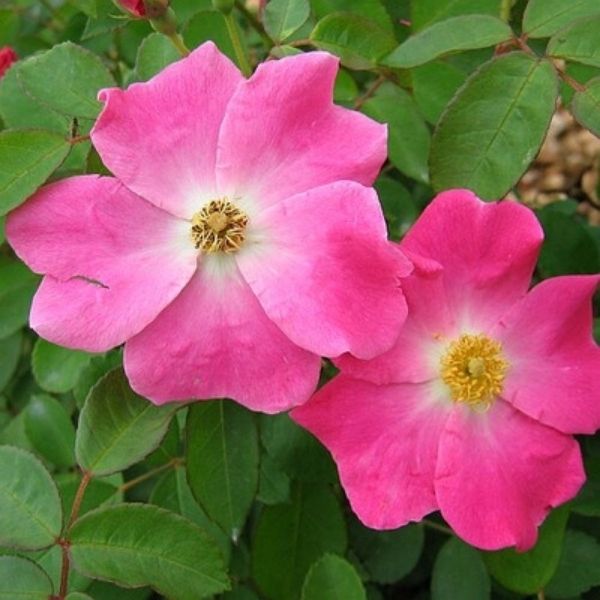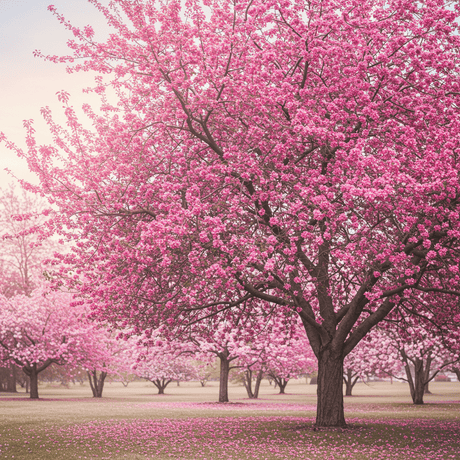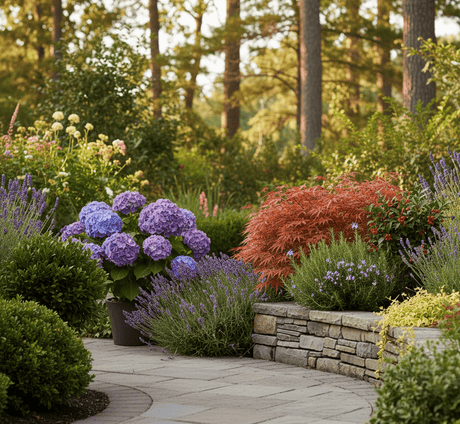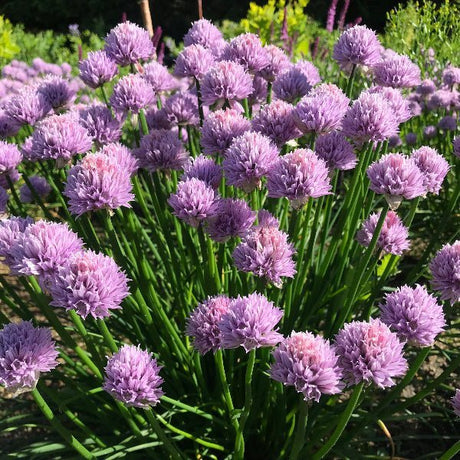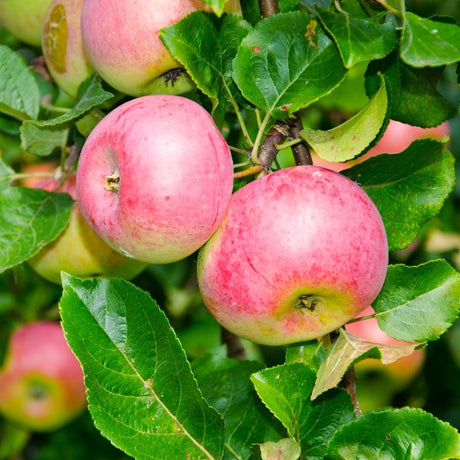Nearly Wild Floribunda Rose
Rosa x 'Nearly Wild'
- Stay Protected with Plant Sentry ™
Nearly Wild Floribunda Rose - #3 Container is backordered and will ship as soon as it is back in stock.
Plant Sentry™
Plant Sentry™

Plant Sentry™ Protected
Your order is protected by our compliance system that:
- Prevents restricted plants from shipping to your state
- Ensures plants meet your state's agricultural requirements
- Protects gardens from invasive pests and diseases
Delivery and Shipping
Delivery and Shipping
Delivery and Shipping
Fast, Safe Plant Delivery
Ships in 3-4 business days • Tracking provided • Weather protected
| Under $50 | $9.99 |
| $50 - $99.99 | $14.99 |
| $100 - $149.99 | $16.99 |
| $150 - $198.99 | $24.99 |
| $199+ | FREE |
✓ Zone-specific timing • ✓ Professional packaging • ✓ Health guarantee
Understanding Plant Options
Nature Hills offers plants in two main formats:
- Container Plants: Grown in pots with soil, sized by container volume and plant age
- Bare Root Plants: Dormant plants without soil, sized by height measurements
Container Plant Sizes
Container sizes indicate plant age and growing capacity rather than liquid volume equivalents. Our containers follow industry-standard nursery "trade gallon" specifications, which differ from standard liquid gallon measurements.
Young Plants (6 months to 18 months old)
| Container Size | Actual Volume | Metric Equivalent |
|---|---|---|
| 2" x 2" x 3" | 0.18 - 0.21 dry quarts | 0.20 - 0.23 dry liters |
| 4" Container | 0.31 - 0.87 dry quarts | 0.35 - 0.96 dry liters |
| 4.5" Container | 0.65 dry quarts | 0.72 dry liters |
| 6" Container | 1.4 dry quarts | 1.59 dry liters |
| 1 Quart | 1 dry quart | 1.1 dry liters |
| 5.5" Container | 1.89 dry quarts | 2.08 dry liters |
Established Plants (18 months to 2.5 years old)
| Container Size | Actual Volume | Metric Equivalent |
|---|---|---|
| 2 Quart | 2 dry quarts | 2.2 dry liters |
| #1 Container | 2.26 - 3.73 dry quarts | 2.49 - 4.11 dry liters |
| 5" x 5" x 12" | 3.5 - 4.3 dry quarts | 3.85 - 4.74 dry liters |
Mature Plants (2-4 years old)
| Container Size | Actual Volume | Metric Equivalent |
|---|---|---|
| #2 Container | 1.19 - 1.76 dry gallons | 5.24 - 7.75 dry liters |
| #3 Container | 2.15 - 2.76 dry gallons | 8.14 - 12.16 dry liters |
Large Plants (3-5 years old)
| Container Size | Actual Volume | Metric Equivalent |
|---|---|---|
| #5 Container | 2.92 - 4.62 dry gallons | 12.86 - 20.35 dry liters |
| #6 Container | 5.25 - 6.01 dry gallons | 23.12 - 26.42 dry liters |
| #7 Container | 5.98 - 6.53 dry gallons | 26.34 - 28.76 dry liters |
Bare Root Plants
Bare root plants are sold by height from the root system to the top of the plant. Plants may exceed minimum height requirements.
Common Sizes:
- Trees: 1 foot, 2 feet, 3 feet, 4 feet, 5 feet, 6 feet
- Shrubs & Perennials: 1 foot, 18 inches, 2 feet
Important Notes
Container Volume Specifications
- Trade Gallon Standard: Our containers follow industry-standard "trade gallon" specifications established by the American National Standards Institute (ANSI Z60.1) for nursery stock
- Volume Variations: Actual soil volume may vary due to plant root systems and growing medium settlement
- Age Indicators: Container size primarily indicates plant age and maturity rather than liquid volume equivalents
Growing Conditions
- Plant size can vary based on variety and growing conditions
- Container size helps indicate plant maturity and establishment level
- Larger containers generally mean more established root systems and faster landscape establishment
Seasonal Availability
- Bare root plants are available seasonally when dormant
- Container plants are available throughout the growing season
- Specific varieties may have limited availability in certain sizes
Questions?
For questions about specific plant sizes or availability, please contact our plant experts who can help you choose the right size for your landscape needs.
Plant Highlights
Nearly Wild Floribunda Rose highlights at a glance!
-
Plant Class
-
Botanical Name
-
Brand
-
Growing Zones4, 5, 6, 7, 8, 9
-
Growth RateModerate
-
Mature Height
-
Mature Width
-
Leaf Color
-
Flower Color
-
Fall Color
-
Pollinator FriendlyYes
-
Bloom PeriodLate Spring, Early Summer, Late Summer, Early Fall, Late Fall
-
FragrantYes
Characteristics
Where To Plant
When To Prune
- Early Spring
Water & Moisture Needs
- Moderate
Sunlight Needs
Soil Needs
- Well Drained
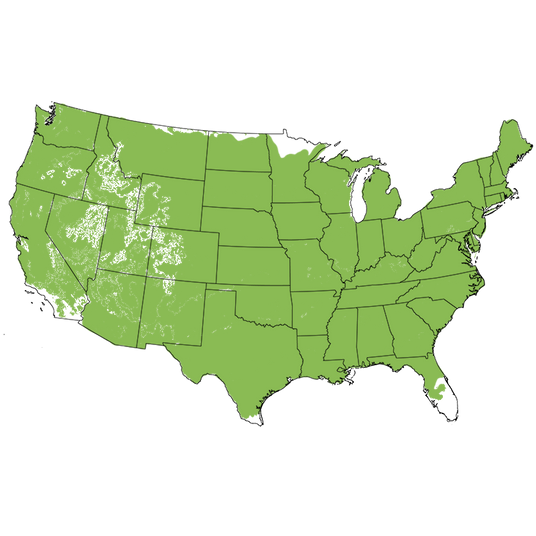
Growing Zones
You may have seen pink-flowering, wild Roses growing along rural fence lines and in natural areas. Rose lovers know that Wild Roses have a truly hardy nature and feature delightfully fragrant flowers that develop into stunning rose hips in autumn. But, they can be a little rangy and freeform for use in modern landscapes. So let's look at one of the best-cultivated varieties that have had a little help from horticulturists. Nearly Wild Floribunda Rose (Rosa x 'Nearly Wild') gives you the chance to have a Rose variety that looks a little like a "species Rose" but still has the stellar qualities of a developed one!
Nearly Wild Floribunda Rose starts blooming in May and continues right into fall. The flower production is phenomenal. Each plant produces masses of single pink flowers that resemble wild Roses. You'll love the apple-like fragrance! It's a Floribunda, so the sweet pointed buds and rose-pink blooms are produced in clusters on new growth at the tips of the branches. Each 3-inch, single bloom features delightfully pink, 5-petaled blossoms with yellow stamens and a delicious, fresh fragrance.
Glossy, dark green foliage completes the picture, a perfect accent to the stunning blossoms. But the vibrant pink, cup-shaped flowers, and buds are held so profusely, that you may be hard-pressed to see any of the rich green foliage between all the blooms. With a nice rounded form and densely held branches, Nearly Wild Roses stay compact and elegant! There is nothing rangy about these beautiful plants. They'll work in any garden style.
Nearly Wild Rose combines the best of both worlds. It gives you a "wild" look with a cultivated nature. Plant a Nearly Wild Rose and you'll reap the benefits of a hardy, long-producing Rose with a very natural appearance. Just plant it and then let it grow and bloom its head off for you with only two quick trims a year.
This flower-making machine keeps pumping out flowers. If you leave the spent blooms on the shrub, you will be rewarded with a red-orange Rosehip display that is quite attractive during the winter months. As the season wears on, leave some of the spent blooms on the shrub. They will develop into an attractive display of rose hips for winter. Use these in your annual holiday décor! The songbirds that stay the winter will appreciate the tasty food source!
With a dense, shrub-like nature, Nearly Wild Rose is quite hardy overall. These rugged little plants are easy enough for even beginning gardeners. Butterflies adore single blooms because they are much easier to land on. You'll see so many visit your garden when you include Nearly Wild Roses as a great nectar source!
Planting and Application:
Nearly Wild Roses are excellent for hedge plants in hot, sunny, and exposed areas with good air circulation. Its long-blooming nature, disease resistance, and versatility make it an outstanding choice for anything from a walkway hedge to a container planting on your front porch.
If your house faces south, try Nearly Wild Roses as a very modern foundation planting. Or, go big with a long flowering hedge lining your walkway. Give 3 feet between the sidewalk and the center of the plants to avoid snagging your guest's clothes.
Repeat their use in all your planting beds to help create a unified, designer look. It couldn't be any easier! For a fantastic low hedge, plant two feet apart on center. You'll measure from the center of one to the center of the next. No one ever said a hedge had to be planted in a straight line either! Why not use Nearly Wild Roses in a meandering row that follows the contours of your landscape? They'll put on quite a show, but everyone will leave it alone.
Roses have thorns, and these pretty shrubs can make a friendly fence to keep the neighbor's dogs and kids corralled. It branches quite densely, which makes it a small and impenetrable barrier plant to direct traffic in your landscape.
Commercial landscapers love to use this plant in mass plantings, and so should you in your home garden. Use a zig-zagging staggered planting pattern to create a larger fill planting for a wide-open, sunny spot. Mulch between the plants and keep new plantings weeded until the Nearly Wild Roses grow together.
Nearly Wild Rose has a smaller size, fragrance and outstanding color show which also makes them perfect to include in a patio area planting. Don't forget to use them as thrillers in large containers, as well as in the ground. They mix beautifully with other perennials and annuals! Use a pair flanking either side of your front door.
Nearly Wild makes a great facer shrub with tremendous flower power. Plant them on the sunny side of larger shrubs and trees. They are a wonderful, low contrast to evergreens and shrubs that tend to be a bit leggy with sparsely held foliage near the ground. Try them in your cutting gardens and as backdrops for garden borders.
As you can imagine, when you are able to purchase the largest container size we have in stock, you'll enjoy a big head start. Go bigger whenever you can, and you'll know that your plants have received a long time of expert care from our experienced plantsmen.
- Fragrant Pink Single Blooms
- Long-Lasting Reblooming Floribunda Rose
- Dense Branching & Rounded Outline For a Formal Look
- Showy Rose Hips All Winter Long
- Versatile & Hardy Pretty Barrier Plant, Accent & Pollinator Gardens
#ProPlantTips for Care:
Nearly Wild Rose is adaptable to most types of soils, as long as they are well-drained. If you see puddles long after a rain, bring in additional soil and heap it into a mound 18 - 24 inches high, and plant in that mound. Or, create a raised planting bed to improve drainage.
Be sure to baby new Rose plants in their first season. You'll get the best results if you provide a moderate amount of water on a regular basis. However, Nearly Wild is tough enough to tolerate drought quite well once its root system is well established in your native soil, and demands little of your time. Go ahead and enjoy your vacation!
Use a fertilizer designed for Roses according to the directions. Please keep nitrogen-heavy lawn fertilizers away from Rose bushes, or you'll wind up encouraging green foliage and see few blooms.
Mulch the soil for a polished presentation, and try to water only at the root level. You'll want to keep the leaves dry as much as you can. A full sun position, where they receive lots of the drying power of the morning sun will help keep the foliage clean and nice.
Prune this Rose in early spring just as it starts to show signs of new growth. Cut all of the stems down to 6-8 inches or so to eliminate much of the old stems. Removing the dense and thorny old wood will allow fresh new growth to develop from the base. You'll love how many new flowers are produced on new foliage. Refresh your Nearly Wild Rose with yearly hard pruning for the most floriferous display.
After the first, heavy round of blooms, you may want to deadhead the spent blooms either by shearing the plants for a more formal look or you can simply prune back the flower stems just below the old blooms. The pruning will encourage the next round of blooms to quickly push and before you know it, it will be blooming again. You'll quickly enjoy the next flush of beautiful flowers!
Even untrimmed, they feature a formal appearance because of the dense branching and even, rounded habit. The less pruning you do, the more Rosehips you and your songbirds will be able to enjoy! Find more about winterizing, and un-wintering your Roses in our Garden Blog, plus all the tips and tricks you need when pruning your new prize Rose bush!
- Full Sun
- Moist Enriched Well-Drained Soil
- Regular Fertility & Watering
- Prune Early Spring
- Appreciates Mulched Beds
- Easy to Care For & Disease Resistant
Admittedly, we're partial to this special Rose variety, but we're sure you'll adore the Nearly Wild Rose in your landscape too. Order from the expert growers at NatureHills.com today and enhance your landscape this year, and get ready for flowers all season long!
Frequently Asked Questions
How do you care for a shrub Nearly Wild Rose?
The Nearly Wild Rose is a Floribunda that enjoys full sun and moderately moist, well-drained soil. Prune in early spring and fertilize once a year with an organic, slow-release fertilizer.
How do you prune a Nearly Wild Rose?
It is best to prune in very early spring just as you see new growth beginning to emerge. Dead wood from winter-killed cane tips, and weak or crossing branches that might cause problems should be removed. The key is removing older and/or diseased stems leaving clean and healthy stems each year.
Should you deadhead Nearly Wild Roses?
You can deadhead Neary Wild Roses after they fade in the earlier part of the season, however, leaving later emerging flowers can be left on the plant so you can also enjoy the colorful rose hips for winter interest.
Is Wild Rose the same as Rosehip?
Rosehips are the seed pods of some types of Rose bushes. The Neary Wild Roses and Rugosa Roses both have these ornamental seed pods that are showy and persist throughout the winter for interest.
What Shipping Options Do You Offer?
NatureHills.com works closely with our growers and nursery professionals to ensure our plants are shipped at the proper planting time for your growing zone. Our goal is to deliver the hardiest plants by avoiding extreme high and low temperatures. Check out our shipping schedule for more information and to learn our wills and won'ts when it comes to shipping plants. Find your Nearly Wild Rose for sale here at NatureHills.com!

